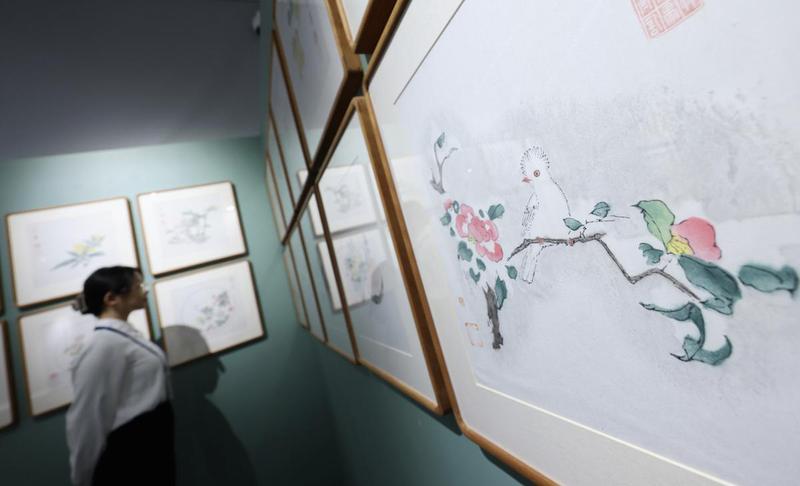- ABOUT JNU
- ADMISSION
-
ACADEMICS
- Schools and Colleges
-
Departments and Programs
- Arts College of
- Chinese Language and Culture College of
- Economics College of
- Electrical and Information Engineering College of
- Foreign Studies College of
- Information Science and Technology College of
- Environment School of
- Humanities School of
- International Business School
- International Studies School of
- Journalism and Communication College of
- Law School
- Liberal Arts College of
- Life Science and Technology College of
- Management School of
- Marxism School of
- Medicine School of
- Pharmacy College of
- Physical Education School of
- Science and Engineering College of
- Shenzhen Tourism College
- Research Institute
- Research Center
- Programs in English
- Majors
- Study Abroad
- Online Learning
- RESEARCH
- CAMPUS LIFE
- JOIN US
Latest News
JNU holds National Intangible Cultural Heritage exhibition
Date: Nov. 16, 2023
Source: People's Daily
Author: JIANG Xiaodan, CHEN Ping
Translator: CHEN Xiyue
National Intangible Cultural Heritage: Ten Bamboo Studio Woodlock Printing Exhibition was launched at JNU's International Art Space on Nov. 15. This new art exhibition was planned by JNU's Academy of Cultural Heritage and Creativity after it was awarded the United Nations Educational, Scientific and Cultural Organization Chair of World Traditional Handicrafts: Inheritance and Innovation last year.

As an outstanding artistic treasure that China has contributed to the world, woodblock printing combines technology, art, painting and aesthetics, encompassing the wisdom and creativity of the Chinese people. The world's earliest woodblock print, The Diamond Sutra, with inscriptions of dates, was created in 868 A.D. during the Tang Dynasty; it is now in the British Museum. Later, in the Northen Song Dynasty, Bi Sheng, a craftsman from Hangzhou, invented movable type. Thus, the Chinese people have made important contributions to the techniques of woodblock printing and movable type.
Ten Bamboo Studio was founded by Hu Zhengyan in the Ming Dynasty. With printing techniques including watercolor block printing and Gonghua technique of decorative designs made by raised lines, it pushed the woodblock printing technique, the most complex and exquisite in the woodcut printing technique, to an extreme.
To pass on this cultural heritage, the Zhejiang Academy of Art, predecessor of the China Academy of Art, opened a woodblock printing workshop in 1954. But not until 2001 was the woodblock printing technique brought back to life. Wei Lizhong, inheritor of the technique, officially founded the Zhejiang Ten Bamboo Studio Woodblock Printing Museum. Through unremitting efforts to protect and revitalize this traditional Chinese art, Ten Bamboo Studio, which had been lost in history but long enjoyed a good reputation for several centuries, has finally gained recovery and vitality.
Ten Bamboo Studio in Hangzhou has become the national intangible cultural heritage base for passing on woodblock printing. Wei, China's contemporary outstanding intangible cultural heritage successor, was named China's Intangible Cultural Heritage Nominee of 2021.
JNU Party Secretary Lin Rupeng pointed out that this exhibition at JNU not only passed on and spread classic Chinese culture but also showed JNU's firm commitment enhancing the influence of Chinese civilization.
NEWS
- About the University
- Quick Links
Copyright © 2016 Jinan University. All Rights Reserved.




